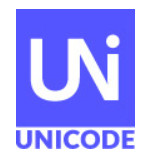Unicode version 14 announced
What does it mean to have a same-day payday loan?
These loans sometimes referred to as cash advances are able to give you quick cash when you require it the most. They offer a variety of terms and rates to facilitate quick funding therefore, the processing is typically quicker than traditional loans. Due to the speed and ease of the process, You’ll be charged an extra amount in fees and interest as compared to conventional loans. GreenDayOnline – payday loans online same day platform.
In the words of the Unicode Consortium:
Unicode standard is the foundation for every modern piece of software and communication across the globe, including all operating systems that are modern including laptops, browsers and smartphones, aswell with web-based applications like the Internet and web.
This means that Unicode version 14 add 838 characters, which includes 5 new scripts, and 37 new Emoji.
These scripts include:
- Toto is a type of writing Toto language in the northeastern region of India
- Cypro-Minoan is an untranslated historical script, that was mostly utilized in the islands of Cyprus and the areas surrounding it in the Late Bronze Age (approx. 1550-1050 BC).
- Vithkuqi, a script that dates back to the time of the Albanians which could be used for writing Albanian and is now undergoing the modern revival
- The ancient Uyghurs is a historical script that was used throughout Central Asia and anywhere to write Turkish, Mongolian, Tibetan, Chinese, and Arabic languages
- Tangsa is a contemporary script that is used for writing Tangsa language that is spoken by people in Myanmar and India
It indicates that Unicode isn’t just that useful for communication in the contemporary world, but it is also the wathcmen to preserve the legacy of ancient or niche cultures.
More specific, technically speaking it is a Unicode script:
Some scripts can be used to support different writing systems. For instance the Latin script is compatible with German, English, Vietnamese, French, Latin itself, and a variety of different language.
A few other minor also were added, such as:
- A lot of Latin extensions for the extended IPA
- Arabic scripts have been used to create various languages throughout Africa as well as Pakistan, Iran, Malaysia, Bosnia, Indonesia, and Java, as well as in writing tributes as well as supplementary texts to the Quran
- Character extensions to aid these languages in NorthAmerica and the Mongolia, India and Philippines
In order to use the newest characters, you’ll have be patient for preferred fonts and apps to be upgraded to support this new format. This same time frame applies to support for programming languages. Perl is the first to implement the most recent Unicode standards. In instance, compatibility with Unicode 10 was added to Perl version 5.28 back in 2018 and Perl 5.32.0 included Unicode 13 and I believe the next version will also support Unicode 13.
What’s the most efficient way to accomplish this? Rename the file in a way it contains only characters that belong to the widely recognized ASCII character set. This means that it is necessary to eliminate any non-ASCII characters. In order to do this, we have to introduce blocks and scripts. Based on Perlunicode,
We are able to solve the problem of portability. There is [[:ascii:]]–POSIX class as well as the Unicode block p InBasicLatin that are every ASCII characters. i.e. by the negation [^[:ascii:]]or P InBasic_Latin, we can access all non-ASCII characters. As with everything else in Perl TMTOWTDI is a way to express non-ASCII (there are many ways to accomplish this). This example could be the basis for more complicated use cases later on.
What exactly do we really mean by ASCII?
We are referring to characters who have ordinal values that are below 128 and we must get rid of characters that are that are above 127. This get us to a’remove all characters with an ordinal value> 127′ use in the construction of regex leads.
All details about blocks, scripts and similar items are available in the concise guidelines of the standard at Unicode.org. The latest additions to Emoji are available at Emoji Recently added.

